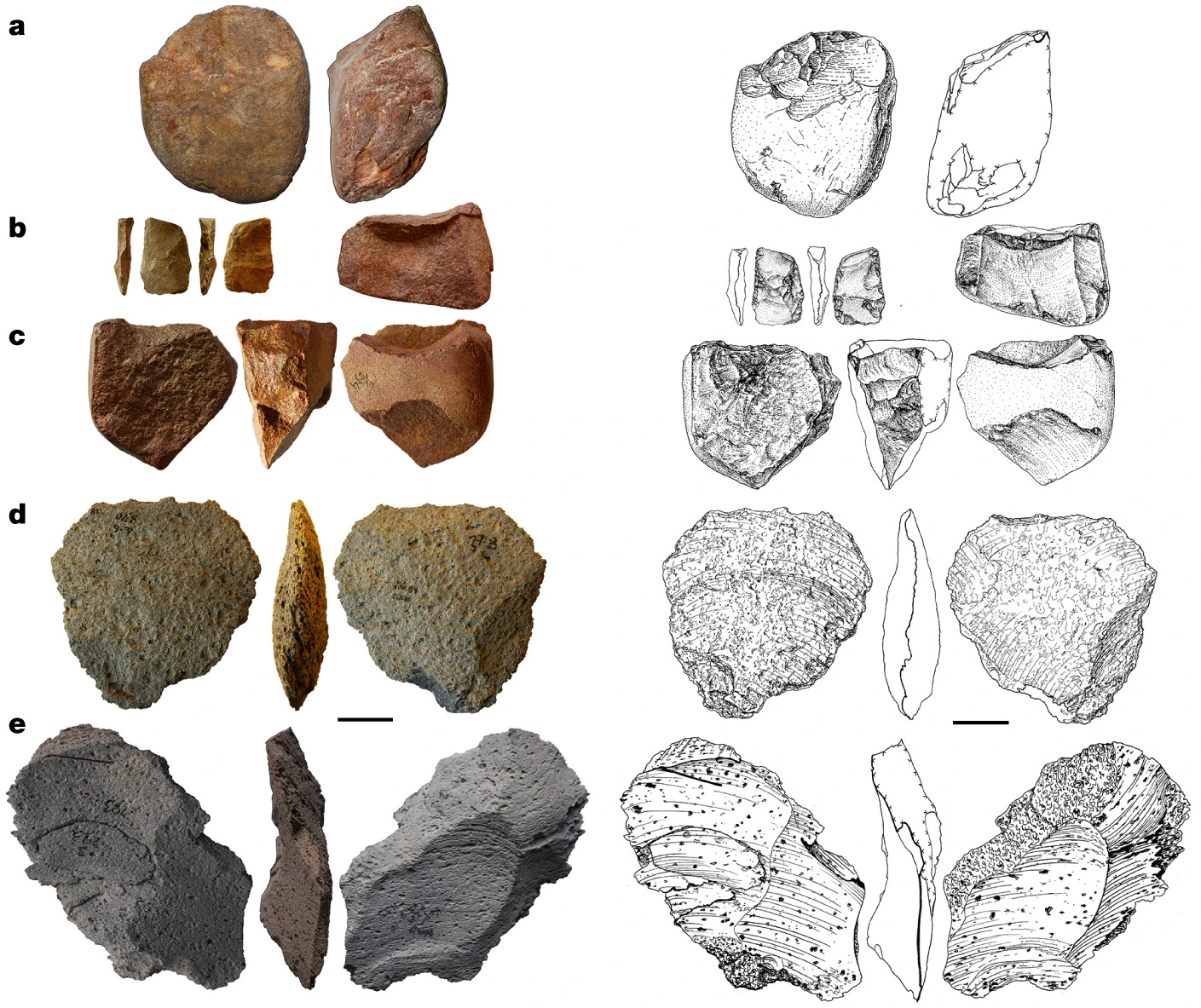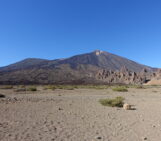
When stars explode, supernova-style, the explosion sets off streams of high energy particles across the universe, mainly protons and alpha particles, that after millions of years reach us here on Earth. Secondary cosmic rays pass through our bodies and almost everything around us, and they penetrate a few meters into the ground where they interact with atoms in soil and rock. This produces new isotopes called cosmogenic nuclides, in tiny but measurable quantities.
These tiny particles paved the way for a new discovery concerning the earliest known evidence of human presence in Europe. Researchers from the Czech Academy of Sciences and Aarhus University used an innovative dating method with cosmogenic nuclides to calculate the age of the burial area where primitive stone tools were discovered in Korolevo, Ukraine.
“Beryllium-10 and Aluminium-26 are especially useful because we know the rates of production of these nuclides, the rates of decay – they are radioactive – and this makes them a very useful dating tool for understanding the history of the earth over the past five million years or so” said Dr John Jansen at the press conference of the EGU24 General Assembly, a researcher from the Institute of Geophysics of the Czech Academy of Sciences involved in the study.
The researchers found that the earliest human presence in Europe at around 1.4 million years ago, is located at a site known as Korolevo. According to Jansen, the stone tools found in the sediments of Korolevo are amongst the most primitive style, and similar ones have been found at the oldest known sites of human occupation worldwide. “These tools are clearly too old and too primitive to be the work of either modern humans, Homo sapiens, or Neanderthals. It’s most likely these people were some variety of Homo erectus, one of our most successful ancestors who appeared around about two million years ago”.
The results of the study in Korolevo, helped the team to propose an answer to another mystery: the possible presence of humans in the Siberian Arctic around 400.000 years ago. The site known as Diring Yuriakh in central Siberia could revise our understanding of when the human species reached high latitudes. In Diring Yuriakh, stone tools were buried by aeolian sand sheets. The researchers combined optically stimulated luminescence dating with the nuclides dating model to yield a preliminary age of 400 ka, which is at least 100 kyr earlier than the previously documented earliest human presence north of 60 degrees. But who were these people that left those tools behind? No fossils have been found at either site, so scientists can’t be sure exactly who these early pioneers were or why they reached so far into the north.
This is how Korolevo might fit into the puzzle, according to Jansen. Using a selection of the oldest securely dated sites in Europe these new findings illustrate one interpretation of people first emerging from Africa into the Levant and Western Asia around about 2.5 million years ago, and then sweeping from east to west, perhaps via the Danube River Valley and the Pannonian Plain. “As you can see from these ages, Korolevo appears to fill the gap between Dmanisi in Caucasus at around 1.8 million years ago, and sites that are somewhat younger in southwest Europe”, said Jansen.

Possible human dispersal routes shown by arrows and a selection of archaeological sites mentioned in the study. Credit: Nature
“At Diring, we find humans very far north, very much earlier than previously thought. Until now, nothing older than about 45,000 years ago has been reported from a range of Arctic sites closer to the Arctic Ocean”.
To this, the researchers came up with two possible theories.
Firstly, once out of Africa, around about 2.5 million years, humans could have moved eastward remarkably quickly. People were already at Shangchen (China), on the Loess Plateau, by around 2.1 million, and they’d reached Java in the tropical Southeast Asia by around 1.5 million years ago. “By this time, humans were colonising vast areas of mid to low-latitude Eurasia and exploiting habitats as diverse as temperate grasslands and tropical rainforests”.
But then it took another million years or more for people to move as far north as Diring. “This seems consistent to us with Jared Diamond’s faster along latitude theory, the idea that dispersal by humans is assisted by following climate gradients. And the other point to note here is that while they was still around 2.000 kilometres from the Bering Strait, people may have been in a position to cross into North America well before the earliest widely accepted timing, which at this point is still around about 14,000 years ago”, Jansen explained. The researcher pointed out that there’s not yet any genomic support for this early colonisation idea, so it seems that if any very early groups did cross into North America, they failed to leave a genetic trace.
So, what could have motivated these intrepid people to migrate into the chilly Arctic around 400.000 years ago? The possible answer is one that doesn’t grow far from the issues that we face as a species today: Climate change! “Earth’s climate is always fluctuating, and we think humans exploited a time of extraordinary warmth in the Arctic during what we call super Interglacial Stage 11. There was, really, no better time in the past 1 million years to do so”.
This timing, as Jansen observed, coincides with the suggested split in the Neanderthal and Denisovan lineages. Other studies have speculated that there probably exists an archaic species known not from fossils, but from DNA found in the basal sediments of the Denisova cave in the Altai mountains, Russia. “We don’t really know who these people were, but there is an intriguing possibility that the Diring migrants were actually a group of archaic humans predating the Denisovans”. Who these ancient travellers were will unfortunately remain, still a mystery!
References
Jansen, J. D., Knudsen, M. F., Garba, R., Andersen, J. L., Buylaert, J.-P., Kameník, J., Kurbanov, R. N., Lachner, J., Lukyanycheva, M., Margold, M., Murray, A. S., Nørgaard, J., Olsen, J., Rugel, G., Stübner, K., Usik, V., and Ylä-Mella, L.: Redrawing early human dispersal patterns with cosmogenic nuclides , EGU General Assembly 2024, Vienna, Austria, 14–19 Apr 2024, EGU24-4168, https://doi.org/10.5194/egusphere-egu24-4168, 2024.
Garba, R., Usyk, V., Ylä-Mella, L. et al. East-to-west human dispersal into Europe 1.4 million years ago. Nature 627, 805–810 (2024). https://doi.org/10.1038/s41586-024-07151-3





